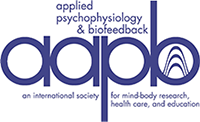Motor Learning Made Possible Using a Tool of Applied Psychophysiology: Quantitative Surface Electromyography
Motor learning is achieved when the subject learns to associate “if movement A, then event B occurs.” Before using surface electromyography to promote motor learning, one must establish that the subject is capable of the cause and effect described above otherwise, the failure to learn may be assumed to be due to a failure in the modality used, in this case SEMG. If the subject is truly incapable of motor learning then no treatment approach is going to be successful. In this case study, quantitative surface electromyography is used to help a 7-year-old child with autistic-like behaviors learn to sit with an upright posture on a bench. The child has never shown any capacity to learn by association, that is, if one does behavior A, then B will occur. Not only did she learn, but the learning generalized outside of the treatment area such that she found and maintained an upright sitting posture at home and school without cueing. Having mastered the sitting goal, new goals were established for her treatment. The new goals began 4 weeks after she demonstrated mastery of sitting and there was no indication that her sitting posture had deteriorated in any way. Sitting with a severe back curvature for prolonged periods at this age poses problems for later development of the spine and negatively affects the ability to maintain good breath support for speech therapy.

Mary's progress in learning over 11 treatment sessions (shown in % success).

Sitting posture at session 1.

Sitting posture at session 7.

Jeffrey E. Bolek
Contributor Notes
